The Interview: Chris Harhay's Mid-Rise Portfolio Grows Up

From the street, Harhay Developments’ Toronto office is easy to miss. Located just west of Spadina on Richmond Street and housed inside a pair of conjoined Victorian buildings, the unassuming office is part of a row of historic, 19th-century homes. In a city perpetually transformed – and perpetually becoming – by developers, it strikes me a somewhat unusual place to find one.
“It's a nice spot,” says company President Chris Harhay, touring me through the building. “We actually back right out onto Rush Lane,” he adds, “which is the 'graffiti alley' where Rick Mercer shoots his rants.” Just inside, though, a conference room is framed in photographs and renderings of the company's projects. A collection of Harhay's 21st-century condos lines the walls of Harhay's 19th-century office; it's tempting to think of it as a contradiction in terms. So what gives?
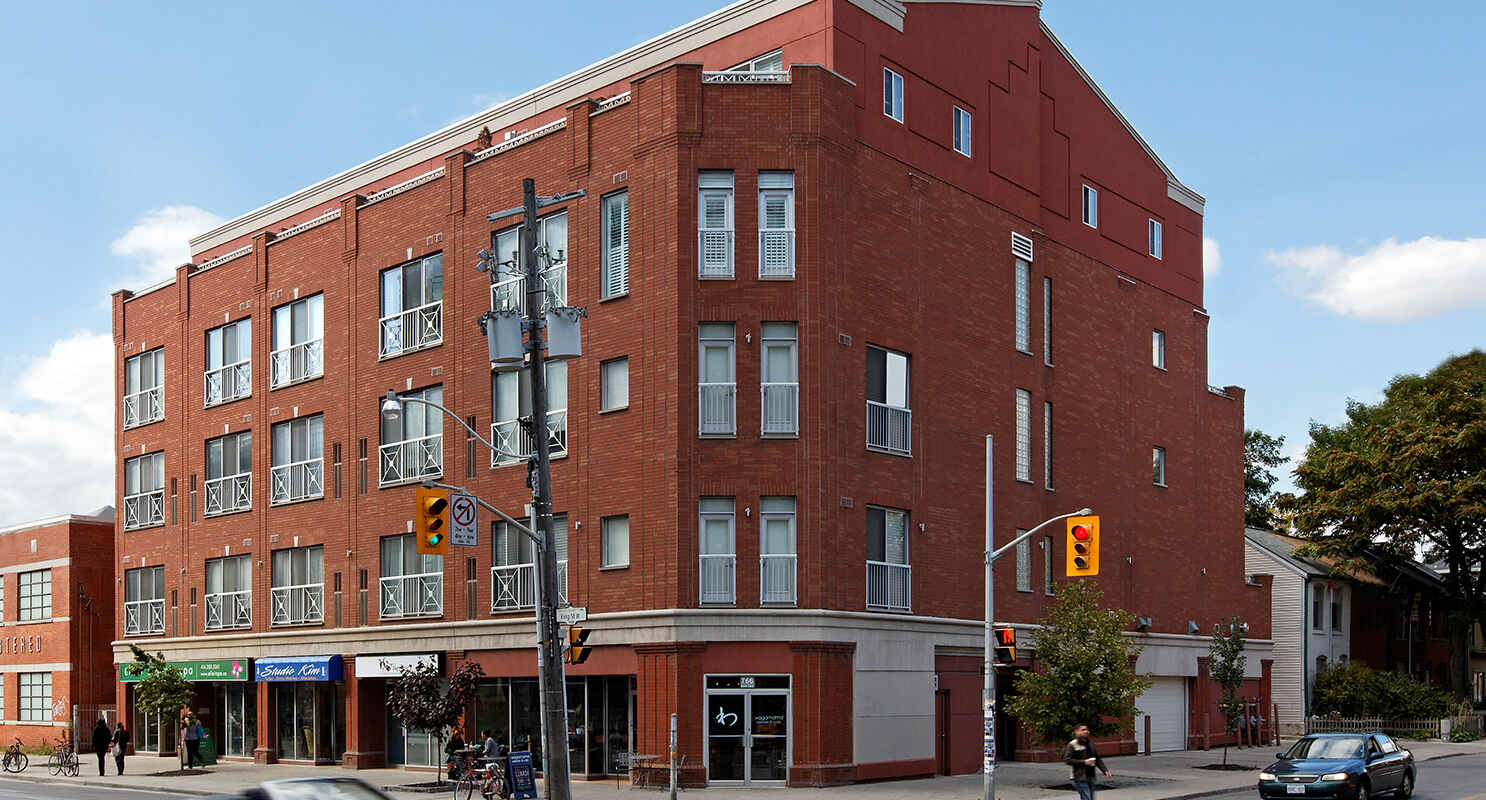
“I believe development is about city-building,” Harhay begins, espousing an admirable – if rather frequently trumpeted – ethos. “We've mostly developed mid-rise urban infill projects, which I hope enhance the neighborhoods they become part of without compromising heritage or existing character. For us, it's not about building the tallest towers or adding the most density,” he continues, “it's about contributing contextually sensitive, well-built, and well-designed additions to the urban realm.”
“We actually started as a builder, and then branched into development from there,” Harhay explains, tracing a company history that dates back almost 30 years. In 1987, the company was founded as Harhay Construction Management Ltd by Chris' father, Walter. “The company started from a civil project background,” the younger Harhay explains, “and our first condo project came in 2000.” That was King West's Tecumseth Lofts (below), a 28-unit adaptive reuse project that added residential density atop an existing commercial building.
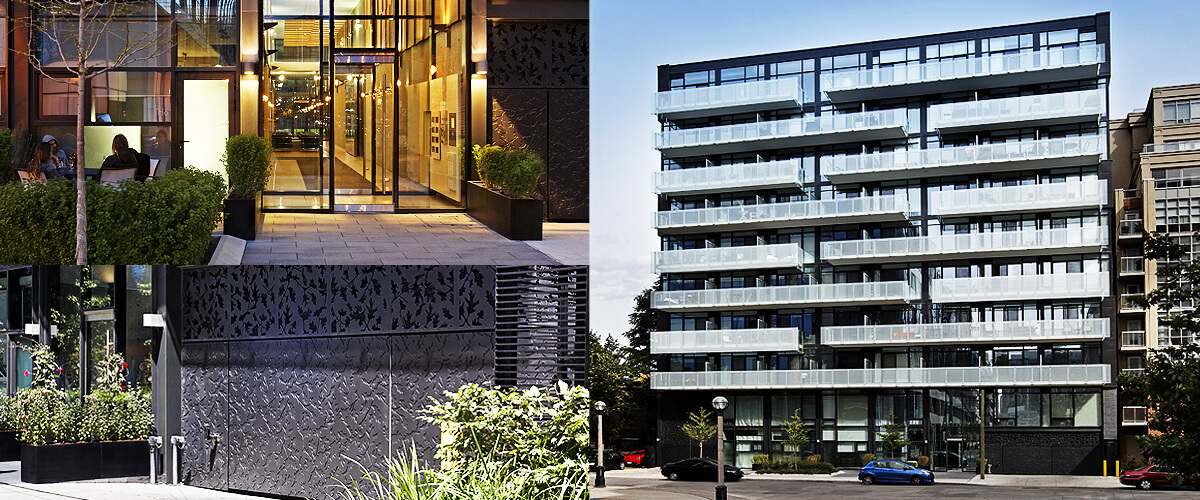
From there, the company – eventually renamed Harhay Developments – evolved along with Toronto's real estate market as condominium development began to boom. In the years since, the company's portfolio has come to include projects such as King Street's 12-storey East Lofts Condos and 10-storey Parc - Loft Residences (below), and Charlotte's Street's 16-storey Glas Condos.
Touting a commitment to “high-design and high-style” projects which tend toward mixed-use infill developments, Harhay draws particular attention to projects that he points to as standout examples of the company's recent work. Developed in partnership with Carttera Private Equities, Riverside's The Ninety “was a really unique project,” Harhay notes.
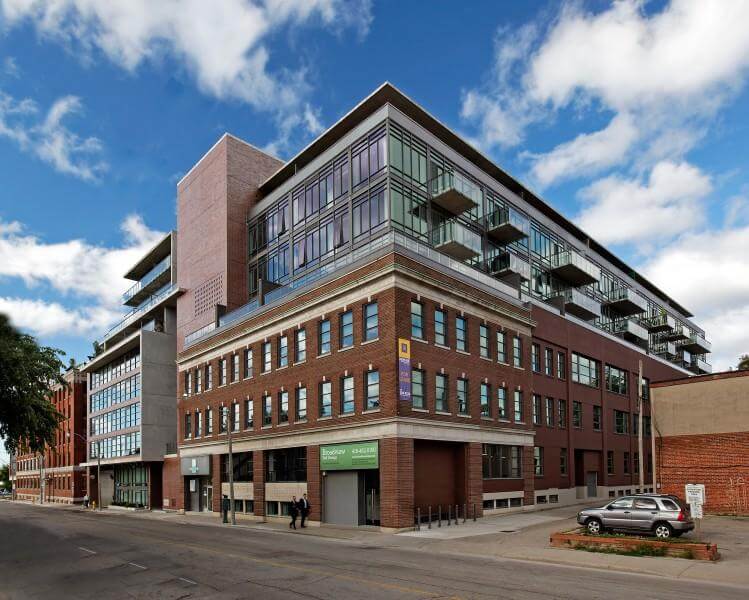
Designed by Core Architects, the 9-storey condominium saw “an 80,000 ft² office building integrated into the project.” Harhay explains. “When we first toured the site in 2007, we were amazed with the building, which is an old Coca-Cola bottling plant that dates back to 1933. The plan was to build a condo on the site, but we fell in love with that building as soon as we saw it. If you pardon my language, I'll put it to you this way,” he concludes, “the thing is built like a brick shithouse.”
Although the property was not heritage-designated, Harhay explains that “the quality of the building, combined with the fact that the office space was fully occupied, really made us want to keep it. We went to the City, and we told them we'd be keeping it.” Given the company's experience as a builder, “we immediately knew that it would be possible from an engineering perspective,” he adds, “and we were even able to keep the office space open throughout the construction of the 222-unit condo.”
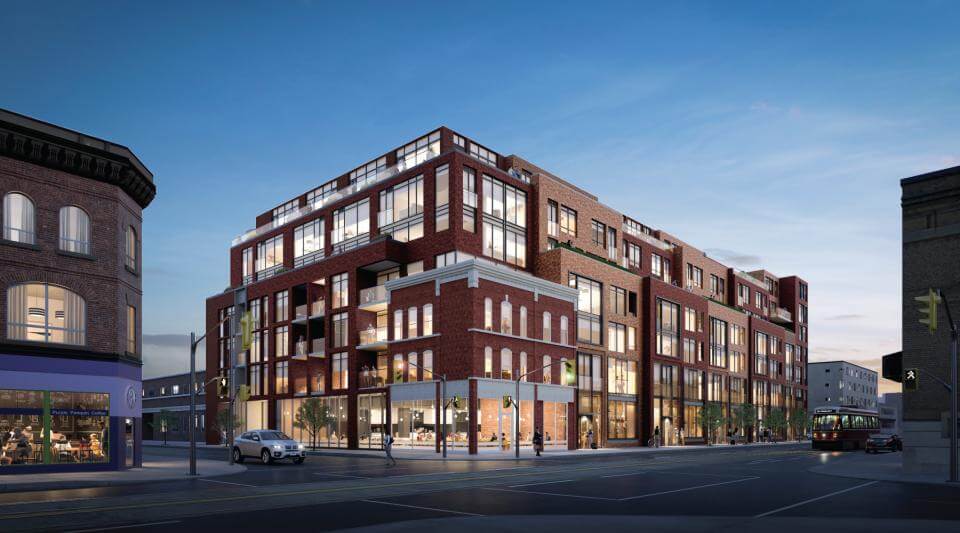
Looking to the future, Harhay also highlights a 7-storey project now in pre-construction at 875 Queen Street East. Replacing the Woodgreen Church with a contemporary mixed-use building, an OFFICEArchitecture design replicates Queen Street's rhythm of Victorian storefronts across a contemporary structure. With a series of small retail spaces fronting the street, the aim is also to reinforce the street's fine-grained commercial environment.
In addition, the project will provide a new home for the Red Door Family Shelter. For the local charity – which delivers short-term emergency housing – the new facility will allow for improved and expanded care. “I think it's important to integrate a mix of uses and community benefits into new development,” Harhay explains. Meanwhile, the corner of Queen and Logan will be fronted by a restored heritage-designated structure.
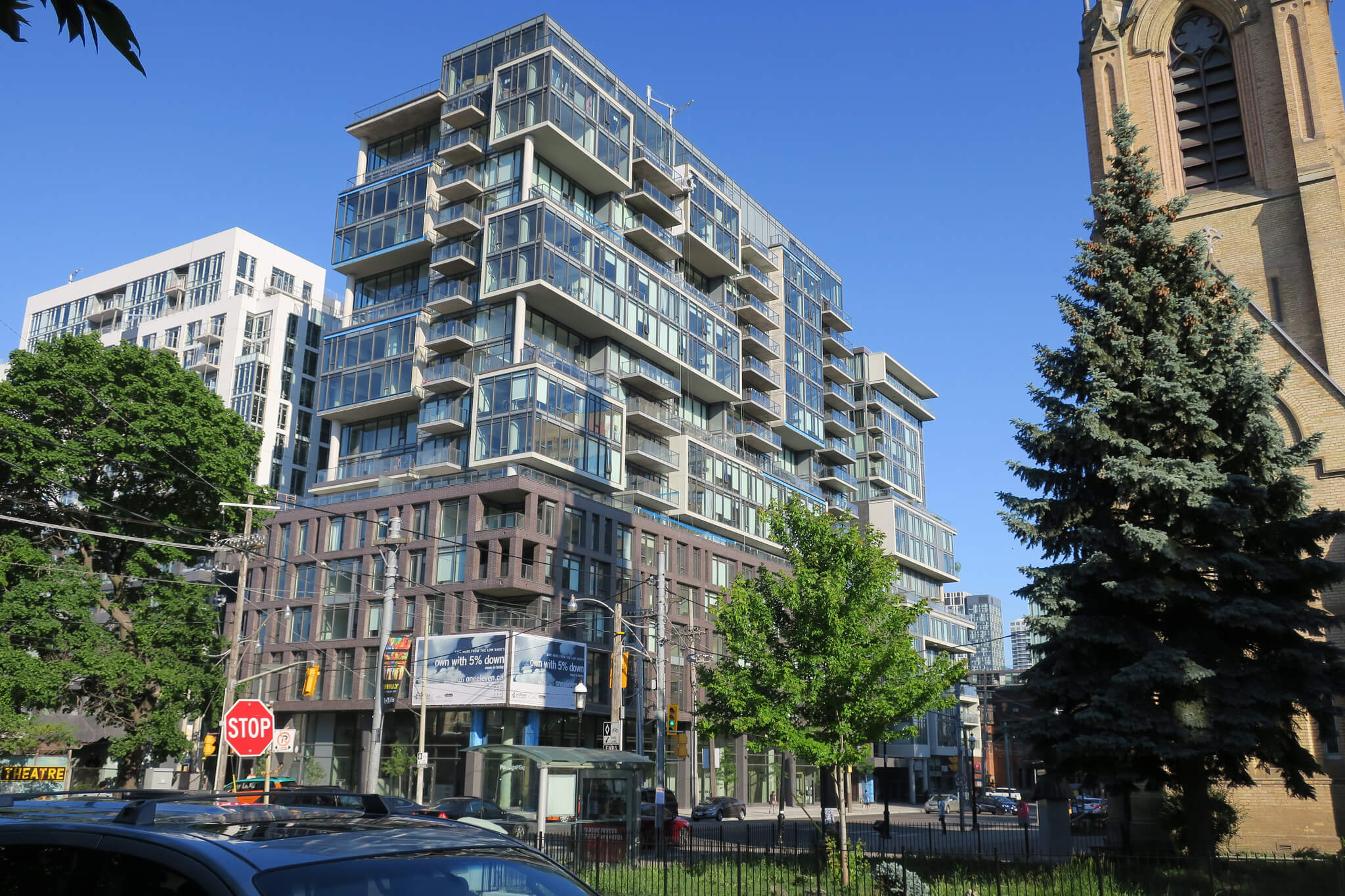
On Bathurst Street, another of Harhay's condominiums now nears completion in Downtown Toronto. Designed by Core Architects, UrbanToronto recently toured the 17-storey oneeleven Condominiums, where high quality interiors finishes – appointed by II BY IV Design – have now taken shape. “We were a builder before we got into development,” Harhay explains, “which impacts how we approach our projects. The construction process is planned out from the beginning, including where we source our finishes, making sure that they're going to be available two years down the line when we need them. And we don't cheap out on our buildings. What you see is what you get.”
Recently, however, the company has taken a foray into high-rise development, with the 47-storey Theatre Park – developed in partnership with Lamb and Niche – now complete on King West. “It's a high-rise, but a lot of the same principles are in place,” Harhay notes. Featuring retail and public space at grade, the slim architectsAlliance-designed tower is also an unobtrusive presence at street level, fitting into the area's urban ecology while contributing an artful presence to the skyline. “I like to think of it as a sort of boutique high-rise project,” he adds. “Throughout the upper levels, there are only six to four suites per floor, which creates a more intimate residential ambiance.”
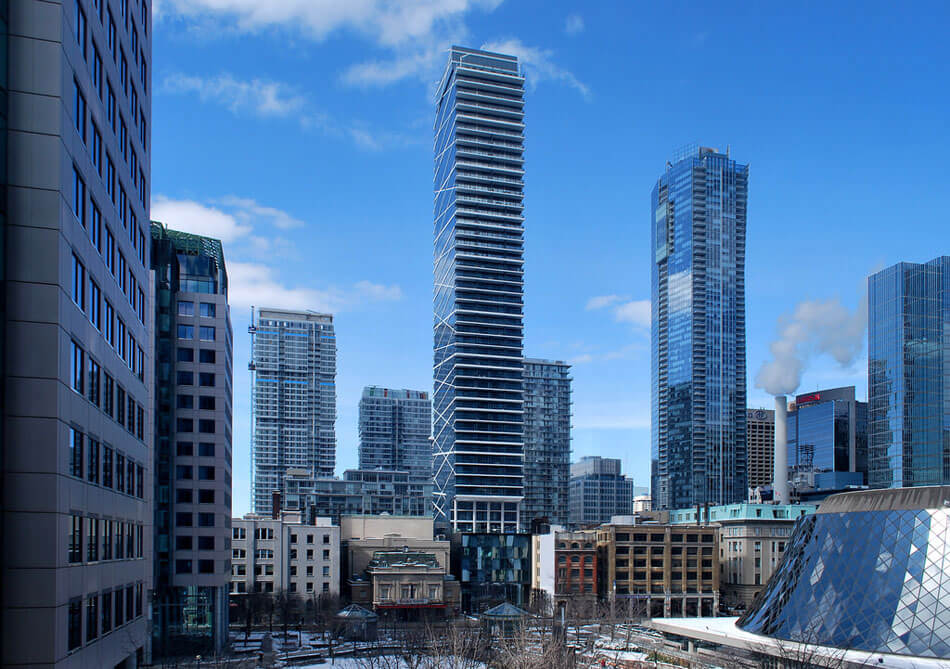
While mid-rise buildings continue to be a major focus, another of the company's high-rises is now making its way through the planning process. In St. Lawrence Market, a proposal for the 29-storey 75 On the Esplanade is set to be resubmitted to the City following a series of community consultations. “We've reduced the height of the tower from 34 to 29 storeys,” Harhay explains, “and we've worked to better integrate the building with its neighbours and add amenities that will be useful to the community.”
Like Theatre Park, the tower – which will replace a surface parking lot – is designed by artchitectsAlliance, with a red brick podium structure integrating the development into the area context. Above, the lighter tone of the point tower will also help reduce the visual impact of the high-rise form. Developed in partnership with Carttera, the project has evolved in response to community input, with massing and height altered to better integrate the building with the neighbouring 55 Esplanade while avoiding new shadowing onto Berczy Park. “We've tailored the project based on what we heard,” says Harhay, “and there were a lot of very insightful comments from the community.”
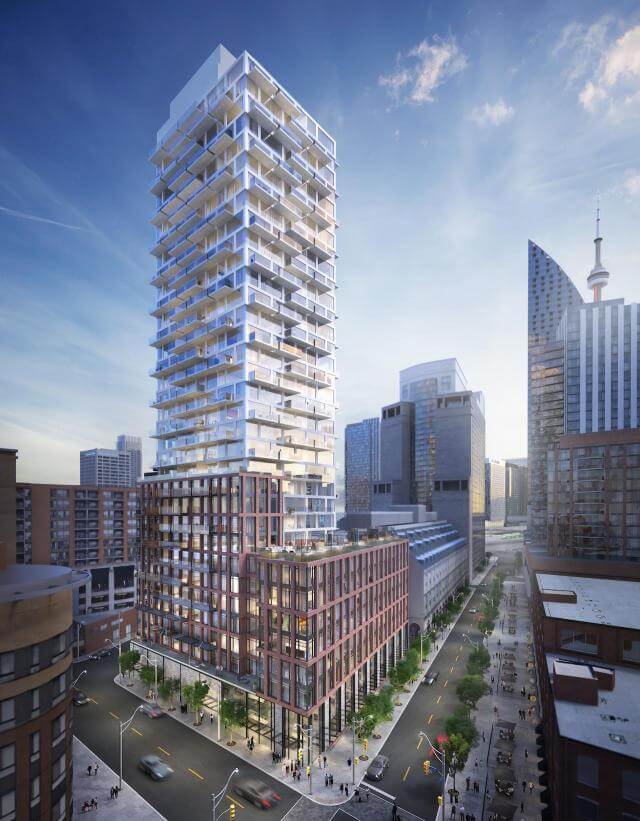
“Ultimately, finding a way to deliver a project that fits into the community is what it's about,” he concludes.
“Listening to public input, and taking it into account is crucial. In the end, it's made projects better every single time.”